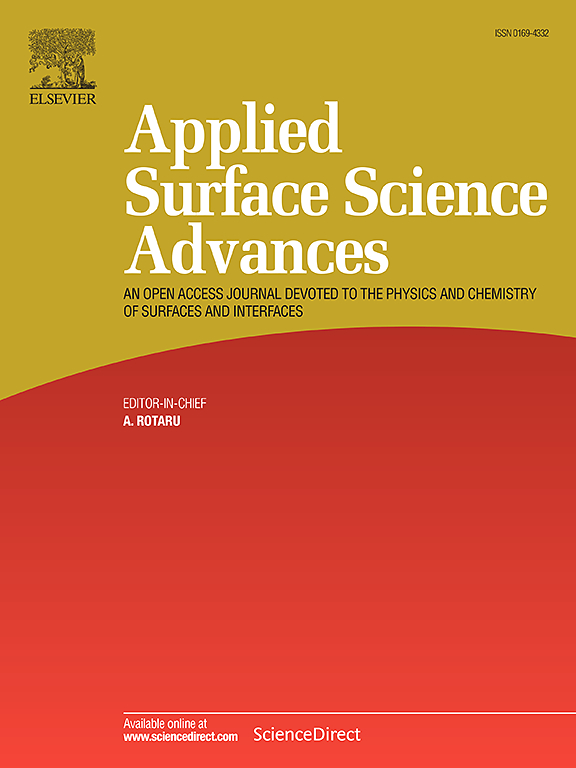Comparison of chip size effects of thin film GaN-based μLEDs fabricated by plasma etching and ion implantation processing
IF 8.7
Q1 CHEMISTRY, PHYSICAL
引用次数: 0
Abstract
We investigated the effects of chip size and N-polar n-GaN surface roughening on the performance of conventional thin-film blue-light micro-light-emitting diodes (TFFC μLEDs) and As+ ion isolated TFFC blue μLEDs. For this, TFFC μLEDs with two different sizes of 10 × 10 μm2 and 25 × 25 μm2 pixel array were fabricated. In all samples, N-face n-GaN surfaces were etched using a 4 M KOH solution after laser lift-off (LLO) process. A 2 min-etching resulted in the formation of pyramids (size: ∼90 – ∼270 nm), while the 4 min-etching produces pyramids (∼370 – ∼780 nm). Regardless of treatments, all samples exhibit similar forward bias characteristics. For all samples, the light output power increased after n-GaN surface roughening. Before the LLO process, the 10 μm-μLEDs showed higher EQE than the other samples with the implanted μLEDs showing the lowest EQE. All samples exhibited their highest EQE after optimal 4-min etching. Unlike before LLO, after 4 min-etching, the 10 μm- and 25 μm-μLEDs show almost similar EQEs, while the implanted μLEDs reveal a slightly lower EQE than the mesa μLEDs, but produce up to 74 % EQE improvement. Furthermore, the 10 μm-μLEDs showed the shortest photoluminescence (PL) decay, while the 25 μm-μLEDs gave the longest PL decay. The 10 μm μLEDs showed the highest ideality factor and the As+ ion-implanted μLEDs gave the lowest value. Based on time resolved PL and ideality factor, the size and etching time dependence of the EQE characteristics of all samples are described and discussed.
等离子体刻蚀与离子注入制备gan基μ led的尺寸效应比较
研究了芯片尺寸和n-极性n-GaN表面粗糙度对传统薄膜蓝光微发光二极管(TFFC μ led)和As+离子隔离TFFC蓝μ led性能的影响。为此,制备了10 × 10 μm2和25 × 25 μm2像素阵列两种不同尺寸的TFFC μ led。在所有样品中,使用激光提升(LLO)工艺后的4 M KOH溶液蚀刻n-面n-GaN表面。2 min蚀刻导致金字塔的形成(尺寸:~ 90 ~ ~ 270 nm),而4 min蚀刻产生金字塔(~ 370 ~ ~ 780 nm)。无论如何处理,所有样本都表现出相似的正向偏倚特征。对所有样品进行n-GaN表面粗化处理后,光输出功率均有所增加。在LLO处理之前,10 μm μ led的EQE高于其他样品,而植入的μ led的EQE最低。所有样品在最佳蚀刻4 min后均表现出最高的EQE。与LLO之前不同的是,经过4 min刻蚀后,10 μm μ led和25 μm μ led的EQE几乎相同,而植入μ led的EQE略低于台面μ led,但EQE提高了74%。10 μm μ led的光致发光衰减时间最短,而25 μm μ led的光致发光衰减时间最长。10 μm μ led的理想因子最高,As+离子注入μ led的理想因子最低。基于时间分辨PL和理想因子,描述和讨论了所有样品的EQE特性的尺寸和蚀刻时间依赖性。
本文章由计算机程序翻译,如有差异,请以英文原文为准。
求助全文
约1分钟内获得全文
求助全文

 求助内容:
求助内容: 应助结果提醒方式:
应助结果提醒方式:


